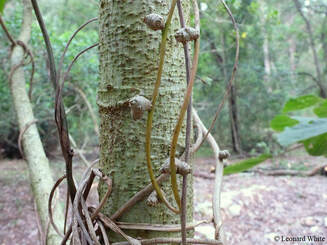 Aerial tubers on Madeira Vine
Aerial tubers on Madeira Vine
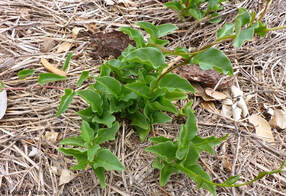 Young Madeira Vine
Young Madeira Vine
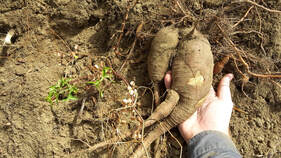
|
Moth vine is a true vine in that it wraps itself around trees and climbs. Left uncontrolled, it can eventually either strangle a tree or cover its canopy with so many of its own leaves that the tree will suffer from lack of light.
It is identified principally by the milky, white sap that comes out of its leaves and stems when broken. It leaves are light green and slightly triangular in shape. The leaves are in pairs and grow opposite each other on the stem. The stem itself is very light brown and slightly rough-barked. Moth vine flowers from late spring to late summer. It has small, white, four-petaled flowers. The flowers mature into large green pods that closely resemble chokos. They open in late autumn releasing thousands of furry seeds that are easily carried by the wind. Removal:
|
|
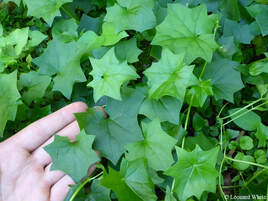
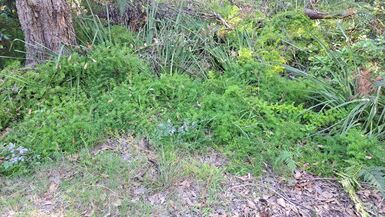 Asparagus Fern
Asparagus Fern
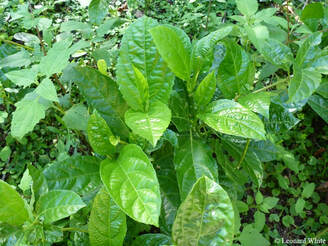 Young Caerulea plants
Young Caerulea plants
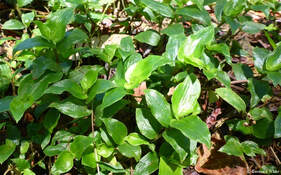
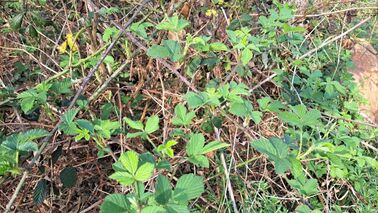
Location |
© 2022
|
